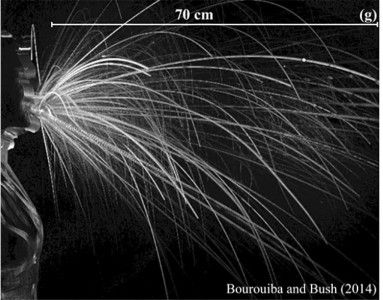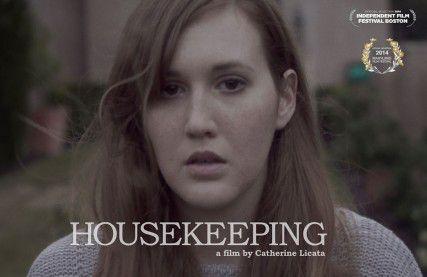
After a prolonged and chilling winter, there’s no better sight than that of flowers on that tree outside of your window starting to bloom. Yet for many, there’s a downside to this otherwise welcome vision: With that blooming comes inevitable allergy attacks from airborne pollen, and with those allergy attacks comes coughs and sneezes.
But even if you don’t have allergies, a team of researchers from the Massachusetts Institute of Technology has just uncovered a new reason to welcome spring with some caution. The molecules from coughs and sneezes of your allergy-ridden friends actually travel farther than previously thought.
“This line of research is really the first step in trying to really use tools of physics and modeling to describe in a mechanistic way the process of contact and transmission in epidemics,” said Dr. Lydia Bourouiba, an engineering professor at MIT and an author of the study.
Why do epidemics of airborne illness happen and how do patterns of transmission take flight? The team answered these inquiries by using a blend of traditional observations and cutting-edge mathematics to determine the behaviors of coughs and sneezes. Their results were published in March in the Journal of Fluid Mechanics.
“The study goes back and forth between observations and experiments and theory,” Bourouiba said. “The first step was to visualize using high speed videography and image processing to dynamics of turbulent clouds and what was emitting during violent expiration.”
The researchers began their investigation using high-speed cameras capable of recording 1,000 to 4,000 frames per second. Violent expirations were recorded and analyzed. Researchers determined that the coughs and sneezes obey a model formally named “turbulent multiphase clouds.”
These clouds are multiphase because they contain three states of matter: gaseous moisture from the expiration of coughs and sneezes, liquid droplets suspended within and solid residue that remains trapped inside as well, Bourouiba said.
“The turbulent part is really the part that is being highlighted in the video with the overturning and mixing of the cloud,” she said. “It’s not a fluid flow. It’s a lot of mixing and that’s what the word ‘turbulent’ is describing.”
The researchers then built a theoretical model based on the videos to examine the cloud arrangement.
The density, momentum and volume were calculated for these artificial coughs and sneezes. From this, the researchers identified the differing trajectories and buoyancies of the large and small pathogen-carrying particles upon expiration.
Their calculations suggest that because the particles mix and the cloud takes on a multiphase existence, germs travel farther than previously expected. Although larger particles fall out of the cloud quicker, smaller ones can stay with the group longer.
“Small droplets can stay trapped in the cloud, so, in reality, they go much farther away in comparison to the large drops, which also was not very clear from the physical picture,” Bourouiba said.
Particles with diameters fewer than 50 micrometers can even stay within the clouds long enough for them to reach the typical heights of ceiling ventilation, which is a public health concern, according to the formal report of the study.
Bourouiba said the researchers would not have been able to observe this characteristic without the additional mathematical model.
“Once you build a model, you have a way of making detailed predictions of how the system might behave and to try to develop methods to control the system and guide its behavior,” said Samuel Isaacson, a Boston University mathematics professor.
Such is the defining nature of this study: The observational and mathematical perspectives combined to produce novel findings that can possibly contribute to future health awareness.
“The goal of that [the study] was to make sure that we can actually explain what we see using this model and validate the mathematical model and then go back and relate it to the dynamics in the real system of human coughs and sneezes,” Bourouiba said.
Due to this multifaceted approach, the procedures of the study almost present a lesson apart from the fact that sneezes and coughs travel far distances. According to BU professor Irving Bigio, science is broadening and research is following accordingly.
“The blending of the sciences and mathematics is something that’s been going on for the last several decades,” Bigio said. “Medicine is not just a discipline that sits by itself.”
Bourouiba said she hopes her team’s work allows for future researchers to combine observational research with mathematical modeling for public health.
“This study was the first step in trying to put mechanistic descriptions of these processes so that we can use them for mitigating strategy assessment and more large-scale mathematical modeling of epidemics” Bourouiba said.



















































































































